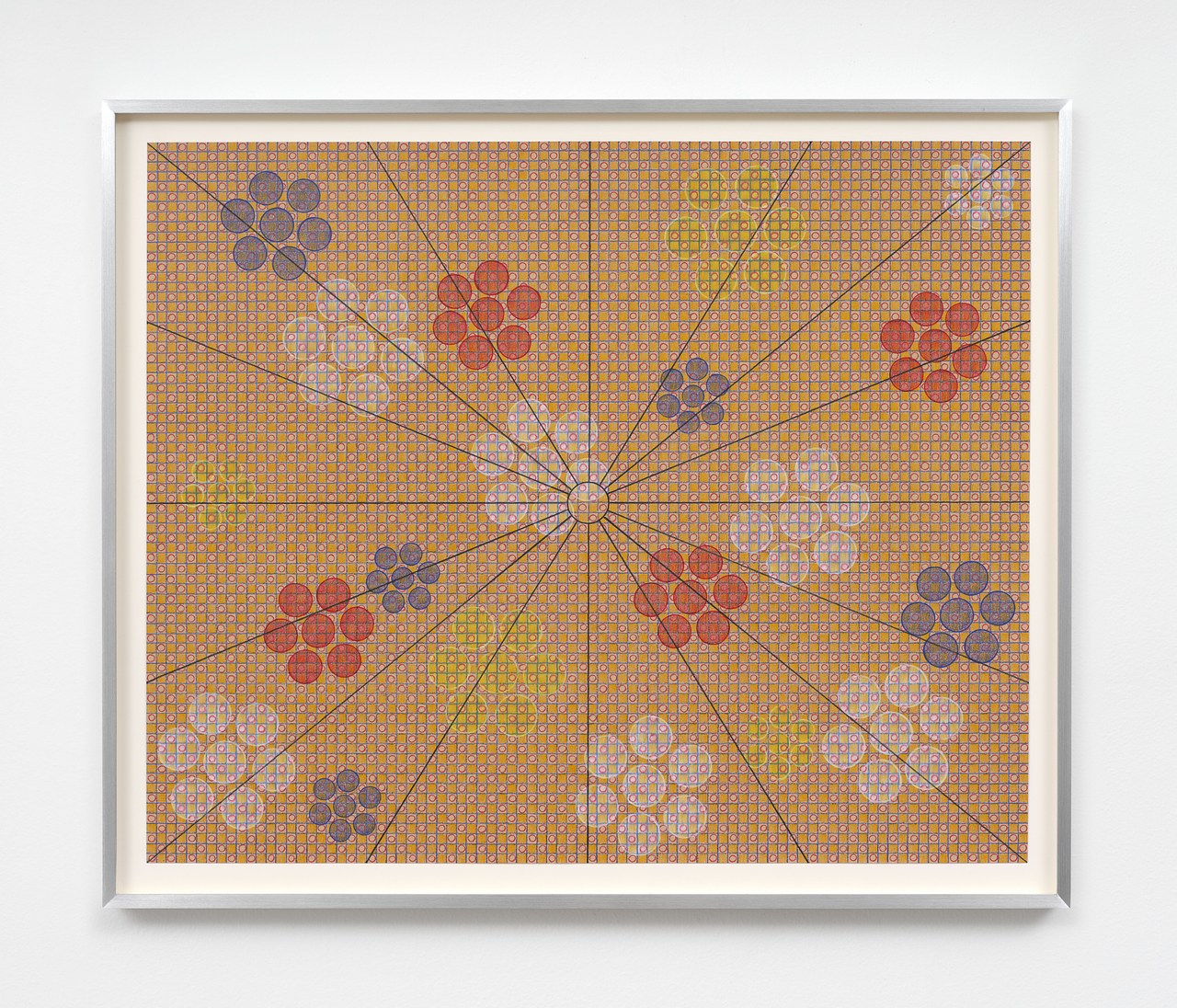Blindfold Receptor (caterpillar-yellow)
2019 - Sculpture (Sculpture)
240 x 66.2 x 38 cm
Leelee Chan
Blindfold Receptor (caterpillar-yellow) by Leelee Chan is inspired by the camouflaging nature of the peppered-moth caterpillar. In 1800s Europe, during the industrial revolution, light-colored moths evolved into a darker color after trees in their habitat darkened by the polluting soot. Today, due to rapid human changes to the environment, caterpillars can adapt even before they metamorphose into moths, mimicking the colour of the branches they inhabit. Having evolved a mechanism to gain visual information about their surroundings, caterpillars can “see” with their skin and alter their colors accordingly. This complex phenomenon indicates a kind of synaesthesia in the evolution of the species, as the skin becomes at once a site of perception and transformation for tactile and visual data. Chan’s work is a hybrid object of industrial materials that translates the mutant nature of the caterpillar. The synesthetic skin of the animal is evoked by the changing surface of a tall chain of omni-wheels; a multi-directional roller mechanism widely used in robotics, manufacturing, and logistics, to accelerate productivity and efficiency in an increasingly automated world. The artist has meticulously assembled a pattern of omni-wheels to appear as an architectural ‘skin’. The work explores the co-existence between nature and human inhabitants in post-industrial urban environments. People are encouraged to touch the caterpillar-omni-wheels and take part in this multi-directional evolution.
Working in sculpture, Leelee Chan’s visual vocabulary reflects her subjective experience of the extreme urbanization in Hong Kong by proposing a dialogue between concrete materiality, found in heavy industry, and poetics found in ceramics, and its cultural archaeology in millinery Chinese history. Chan’s training in sculpture has allowed her to have hands-on practice in the making of each of her pieces. The structural assembling and metal welding needed for the fabrication of Chan’s works is executed by the artist herself. The artist’s work engages with wider narratives linked to science fiction, global export market, the naturalization of urban landscapes, and the environmental crisis. Chan’s sculptures often recontextualise the value of dumpster detritus, household ephemera, and mundane objects that are generally considered unmemorable or unworthy of preservation. She imaginatively explores their transformative potential and reconfigures each item according to their unique quality. Chan’s sculptures evoke architecture and anthropomorphic shapes, embedded with playful and meticulous details that slowly unfold upon closer observation.
Colors:
Related works sharing similar palette
» see more

© » ARTS EQUATOR
In a Material World: IMPART Collectors’ Show 2020 & Justice for All | ArtsEquator Thinking and Talking about Arts and Culture in Southeast Asia ArtsEquator Viewpoints Courtesy of artists January 3, 2020 By Aditi Shivaramakrishnan (1,200 words, 5-minute read) When it comes to analysing an artwork, the artist’s choice of materials can be as revelatory as other elements in suggesting what they might wish to communicate...

© » KADIST
Christina Quarles
2018The title of the painting refers to the fact that the figure’s behind is raised upwards and the face is found at the bottom of the painting, thus inverting the way in which people are normally seen...
Related works found in the same semantic group
» see more

© » KADIST
Mazenett Quiroga
2019Gente Serpiente (Serpent People) is a piece made with the wheels of bikes, twisted, intertwined and painted like skins of tropical poisonous snakes...

© » KADIST
Aki Sasamoto
2012Poetry Light Stool evokes the spirit of Fluxus, the intermedia movement that encouraged artmaking to be simple, fun, and address everyday life...

© » KADIST
Leah Gordon
2012The Caste Portraits Series by Leah Gordon investigates the practice of grading skin color from black to white, which marked the extent of racial mixing in 18th century Haiti...



